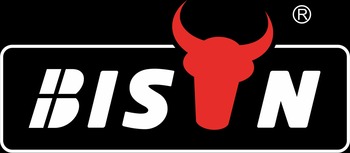
BISON Santy
Hallo, ik ben Santy, de financier van bisonclean.com. Ik ben al meer dan 5 jaar werkzaam in de schoonmaakbranche en het doel van dit artikel is om mijn kennis over hogedrukreinigers met u te delen vanuit het perspectief van een Chinese leverancier.
Inhoudsopgave
Welkom bij BISON's gids over een slang aansluiten op een hogedrukreiniger. Als je in het bezit bent van een hogedrukreiniger, dan weet je hoe belangrijk deze is voor verschillende reinigingstaken rondom het huis, van opritten en terrassen tot voertuigen en buitenmeubilair. Maar om de kracht van een hogedrukreiniger ten volle te benutten, is het cruciaal om te weten hoe je de slang op de hogedrukreiniger aansluit.
In deze handleiding leert BISON u elke stap van het aansluiten van de slang. We geven u alle nodige informatie, gereedschappen, apparatuur en tips voor een goede aansluiting. Een correcte en veilige aansluiting optimaliseert niet alleen de prestaties, maar voorkomt ook potentiële gevaren zoals lekken, klapbanden en ongelukken.
Laten we nu stap voor stap de slang op de hogedrukreiniger aansluiten.

De gereedschappen en materialen die je nodig hebt
- Hogedrukreiniger
- Hogedrukreinigerslang
- Tuinslang
- Connectoren of adapters
- Verstelbare moersleutel of tang
- Teflon tape voor het afdichten van schroefdraadverbindingen
- Beschermende kleding: Handschoenen, veiligheidsbril, antislipschoenen
Stap-voor-stap handleiding voor het aansluiten van slangen
1TP5Stap 1: Voorbereiding voor het aansluiten van de slang
- Maak onderscheid tussen slangen: Een hogedrukreiniger heeft een inlaat en een uitlaat. A tuinslang moet worden aangesloten op de inlaat van de hogedrukreiniger om deze van water te voorzien. A hogedrukreiniger slang wordt gebruikt voor de uitlaat, die een waterstraal produceert onder invloed van de hogedrukreinigerpomp.
- Inspecteer de slang: Inspecteer de slang over de gehele lengte op tekenen van slijtage, scheuren of lekken. U wordt geadviseerd om de slang te vervangen als u beschadigingen opmerkt om mogelijke problemen tijdens het gebruik te voorkomen.
- Inspecteer de hogedrukreiniger: Inspecteer de hogedrukreiniger zorgvuldig op zichtbare schade of lekken. Controleer of het slangaansluitpunt op de hogedrukreiniger schoon en vrij van vuil is.
- Maak onderscheid tussen waterinlaat en -uitlaat: De waterinlaat is meestal gemarkeerd en is waar de slang van je waterbron wordt aangesloten. De wateruitlaat is waar de hogedrukslang op wordt aangesloten, die leidt naar de hogedrukreiniger pistool.
- Zet de hogedrukreiniger uit en haal de stekker uit het stopcontact
- Watertoevoer: Zorg dat de watertoevoer is afgesloten voordat je de slang aansluit.
1TP5Stap 2: Sluit de slang van de hogedrukreiniger aan op de hogedrukreiniger
- Zoek het aansluitpunt van de hogedrukreiniger (wateruitlaat).
- Sluit de slang van de hogedrukreiniger aan op de wateruitlaat. Als je hogedrukreiniger een connector nodig heeft, zorg dan dat je het juiste type hebt en bevestig deze op de slang en de inlaat.
- Dicht de aansluiting af: Wikkel teflon tape rond de schroefdraad van de uitlaat als het een schroefdraadverbinding is. Dit helpt lekkage te voorkomen. Schroef de slang stevig op de inlaat met de hand of met een geschikt stuk gereedschap, maar draai de slang niet te strak aan, want dat kan de schroefdraad beschadigen.
- Opschroefbare slangaansluiting: Neem een uiteinde van de hogedrukreinigerslang en bevestig er een slangkoppeling op. Zorg dat de schroefdraad van de connector overeenkomt met die van het aansluitpunt van de hogedrukreiniger. Draai de slangaansluiting met de klok mee om hem vast te draaien op de hogedrukreiniger.
- Sluit het andere uiteinde van de slang aan: Neem het andere uiteinde van de hogedrukreinigerslang en sluit deze aan op de hogedrukreiniger pistool en bevestig indien nodig de benodigde adapters of connectors.
Omdat de aansluitstappen voor een hogedrukreinigerslang hetzelfde zijn als die voor een tuinslang, hoeft u volgens BISON alleen de bovenstaande stappen te volgen om het ene uiteinde van de tuinslang aan te sluiten op de waterinlaat en het andere uiteinde op de waterbron om de bewerking te voltooien.

#stap 3: De verbinding testen
Zodra je de slang stevig aan de hogedrukreiniger hebt bevestigd, is het testen van de aansluiting essentieel om er zeker van te zijn dat alles goed werkt. Volg deze stappen om de aansluiting te testen:
- Zet de watertoevoer aan: Open een buitenkraan of waterbron om water in de hogedrukreiniger te laten stromen.
- Controleer alle verbindingen op lekken: Probeer bij lekkage eerst de slang vast te draaien met een sleutel of tang. Als dat niet werkt, wikkel dan meer teflon tape om de schroefdraad van de slang en sluit hem opnieuw aan.
- Probeer verschillende spuitpatronen: Pas de hogedrukreiniger mondstuk naar een ander sproeipatroon, zoals een brede waaier of een spitse straal. Zorg ervoor dat elk sproeipatroon goed werkt zonder verstopping of onregelmatigheden.
De juiste slangdrukontlasting en opslagmaatregelen voor hogedrukreinigers
Na gebruik van een hogedrukreiniger is het cruciaal om de druk in de slang te laten ontsnappen. Verwaarlozing van deze stap kan leiden tot mogelijke schade aan zowel de slang als de hogedrukreiniger, waardoor de levensduur en efficiëntie afnemen. Om een normaal gebruik van de hogedrukreiniger te garanderen, vindt BISON dat u de volgende kennis moet hebben.
Druk in de slang wegnemen
Deze eenvoudige maar essentiële stap voorkomt overmatige belasting van de interne onderdelen, waardoor ze langer in goede conditie blijven. Als u klaar bent met de hogedrukreiniger, moet u de hogedrukreiniger en de watertoevoer uitschakelen en de trekker van het mondstuk van de hogedrukreiniger overhalen. Hierdoor ontsnapt het vastzittende water en wordt de druk in de hogedrukreiniger verlaagd.
De slang en hogedrukreiniger goed opbergen
Als u uw hogedrukreiniger en de slang goed opbergt, gaan ze veel langer mee. Volg deze opslagtips nadat de druk is weggelaten:
- Laten uitlekken en drogen
- De slang oprollen
- Binnen bewaren
- Gebruik beschermhoezen
- Controleren op onderhoud
Conclusie
Een slang op een hogedrukreiniger aansluiten is een eenvoudige taak. Door een paar eenvoudige maar essentiële stappen te volgen - zoals het afstemmen van de slangmaat op de capaciteit van de hogedrukreiniger, het inspecteren en reinigen van aansluitingen, het stevig bevestigen van koppelstukken en het gebruik van de juiste afdichtingsmaterialen - zorgt u voor een dichte en lekvrije verbinding en houdt u de gewenste druk voor uw reinigingstaken. Bovendien vermindert dit het risico op ongelukken aanzienlijk en verlengt het de levensduur van uw apparatuur. We raden alle gebruikers sterk aan om veiligheid als prioriteit te stellen bij het gebruik van hogedrukreinigers, de richtlijnen van de fabrikant te volgen en de juiste beschermende uitrusting te dragen.
Als professional fabrikant hogedrukreinigers BISON is de grootste leverancier van hogedrukreinigers en hogedrukreinigerslangen in de sector en zet zich in om hogedrukreinigers en hogedrukreinigerslangen van hoge kwaliteit te leveren die voldoen aan de hoogste normen op het gebied van prestaties en veiligheid. Voor dealers die hun klanten producten van topkwaliteit willen aanbieden, staan wij bij BISON klaar om u te ondersteunen met de beste verkoopplannen op de markt. Sluit geen compromissen op het gebied van kwaliteit of veiligheid - neem vandaag nog contact op met BISON en ontdek ons assortiment superieure hogedrukreinigers.
Veelgestelde vragen over hoe je slang op hogedrukreiniger aansluit
Controleer ten eerste of je probeert aan te sluiten op de juiste fitting. Soms proberen klanten de hogedrukreinigerslang aan te sluiten op de waterinlaat. Vervolgens moet de metalen fitting op de hogedrukreinigerslang met de kraag in de wateruitlaat worden gedraaid terwijl deze in de uitlaat wordt geduwd.
- Elektrische hogedrukreinigers:
Elektrische hogedrukreinigers werken op lagere PSI-niveaus (1300 tot 2000 PSI). Hun slangen zijn meestal gemaakt van PVC of polyurethaan, met een diameter van 1/4 inch en een lengte van 20 tot 35 voet.
- Gasdrukreinigers:
Gasdrukreinigers hebben een hogere PSI (2000 tot 4000+ PSI). Deze hogedrukreinigers worden meestal gecombineerd met slangen gemaakt van duurzamere materialen zoals rubber of hoogwaardig polyurethaan, met een diameter van 5/16 inch of 3/8 inch en een lengte van 30 tot 50 voet of meer.
- Professionele/industriële hogedrukreinigers:
Deze hogedrukreinigers werken op zeer hoge PSI-niveaus (3000 tot 8000 PSI). Ze vereisen slangen voor zwaar gebruik van versterkt rubber of polyurethaan van hoge kwaliteit, met een diameter van 3/8″ of groter en een lengte tot 100 voet.
Er zijn over het algemeen twee soorten aansluitingen voor slangen op hogedrukreinigers: de M22-aansluiting en de snelkoppeling. De M22-aansluiting is een aansluiting met schroefdraad waarbij je de slang op de hogedrukreiniger moet schroeven, terwijl je bij de snelkoppeling de slang gewoon op zijn plaats kunt trekken.




